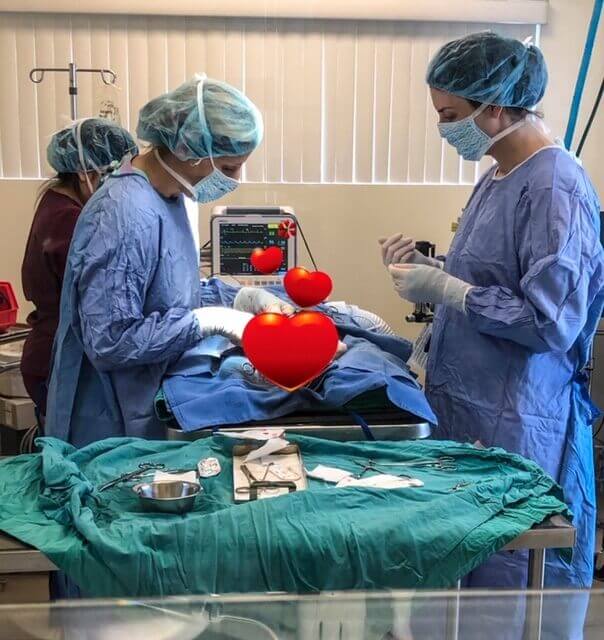
Sterilization of male and female dogs is the process of removing their ability to reproduce. There are many ways that this may be accomplished:
Traditional Procedures:
Ovariohysterectomy
(OVH) is the traditional spay procedure most of us are used to when we have our female dogs 'fixed'. This procedure involves a small incision in the abdomen and removal of the ovaries, uterine horns and uterine body to the level of the cervix. This removes the vast majority of the female reproductive tract. This procedure will prevent ovarian cancer, and a condition called pyometra, which is an infection of the uterus that can be life-threatening if not addressed quickly. Depending on when this procedure is performed, removal of the hormones produced by the ovaries can greatly reduce the likelihood of mammary cancer later in life.
Castration
is the traditional neutering procedure most of us are used to when we have our male dogs 'fixed'. This procedure involves a small incision just in front of the scrotum and removal of both testicles. This procedure will prevent testicular cancer and reduce some behaviors like roaming and aggression against intact male dogs.
Alternative Sterilization Procedures:
Ovarian Sparing Spay
is just what the name implies. It removes the possibility of reproduction by removing the uterine horns, the uterine body and the cervix to the level of the vagina. This procedure leaves the ovaries where they are to allow them to continue to produce hormones. This procedure will prevent uterine infection (pyometra), pregnancy, and reduce the risk of urinary incontinence that we can sometimes see in traditionally spayed females. We do recommend an ultrasound of the ovaries and mammary tissue once a year as a screening test in addition to their physical examination as this procedure will not reduce the risk of mammary cancer.
Ovariectomy
is a sterilization option that involves removing only the ovaries. While this procedure leaves the uterine horns and uterine body, removal of ovaries causes the uterus to shrink significantly and so infection (pyometra) is unlikely and pregnancy cannot occur. This procedure involves a smaller incision than other sterilization options for females and so may be more desirable in very large patients like Great Danes.
Vasectomy
is a form of sterilization for make dogs where a portion of the ductus deferens, which is the tube that connects the testes to the urethra to deliver sperm, is removed. This method prevents the male dog from being able to sire puppies but will leave the testicles in place and they will continue to produce hormones. This means that some of those 'boy dog' behaviors will still be present and so their risk of roaming (trying to find a female), fighting with rival males or acquiring sexually transmitted diseases still exist. These dogs should have a physical exam and regular screening tests for Brucella canis, a sexually transmitted disease. Vasectomies are NOT reversible. While the incidence of prostatic cancer is lower in intact male dogs, they will still be at risk for benign prostatic enlargement and testicular cancer.
If you would like more information on Alternatives to Traditional Spay & Neuter Including Ovary Sparing Spay & Vasectomy, please schedule an appointment with Dr. Mary Sebzda or call 949-612-2756.
